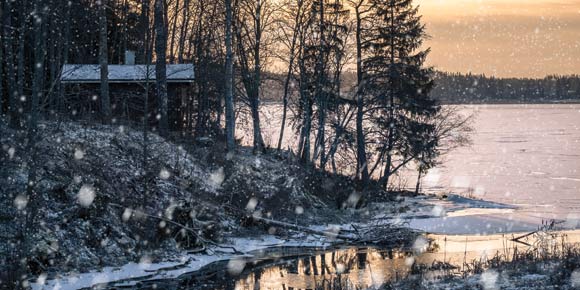By Todd Lewys
It’s — regrettably — that time of year.
Yes — with summer now in the rearview mirror and fall firmly entrenched —it’s time to head out to the lake to prepare the cottage for winter’s inevitable onslaught.
And no matter whether your cottage is a basic lake retreat, or you’ve built the lavish cottage of your dreams, there are some fundamental things you need to do to ensure it comes through winter relatively unscathed.
The checklist below should help you prepare your cottage properly for the snow, wind and cold that always accompany a prairie winter.
• Do a thorough inspection of your cottage’s exterior. Walk around your cottage to see what kind of shape it’s in. There may be holes that need plugging, shingles that need replacing or windows that need to be bolstered. Look for any gaps in the walls, and under the cottage in the floor, if it happens to be exposed. You don’t want any rodents making your cottage their home while you’re away, so plug all holes!
• Check the roof. Do a structural check to make sure it’s sturdy enough to handle a heavy load of snow; this is especially important if you won’t be getting out to your cottage during the winter.
• Clean the gutters. Clogged gutters can cause water to back up beneath shingles and get in to the roof structure below, causing significant damage. Excess water can also freeze, leading to ice damming. So, be sure to make sure the gutters are clear before you leave.
• Check septic tank. If your cottage has a septic waste disposal system, check the tank before the onset of winter. You’ll be glad you did when you return in the spring.
• Shut off the water. Once you’ve shut off the water, drain the pipes, flush the toilet and then turn on a faucet or two to make sure there’s no water left in the pipes. This is critical, for if there’s any water left, it can cause pipes to burst, leading to damage that will have to be tended to come springtime.
• Pack up all food and take it home. Perish the thought, but it’s a fact that canned goods can split open in frigid temperatures. The smell can then attract rodents, who will chew everything in sight once they get into your cupboard. The resulting damage can be significant, so take all food home just to be on the safe side.
• Tightly close all doors and windows. Doing this will not only keep unwanted critters out but will also secure your cottage. If you’re worried about theft, construct makeshift wooden rods out of old lumber or hockey sticks to jam patio doors. Also make sure all deadbolts, door locks and window locks are in proper working order.
• Out of sight, out of mind. Take home — or store — small electronics, tools, ladders, garden tools, fishing gear and liquor — you don’t want
to give burglars any incentives to plunder your cottage.
• Close curtains and blinds. This ensures that sightlines into the cottage are obscured, further reducing the chance of burglary.
• Turn off electrical panel and unplug all major appliances, TV’s, stereos and lamps. While a small detail, this guards against electrical fires.
• Stow boats away from water and drain water out of outboard motors. Doing this ensures your trusty boat and motor will operate perfectly once you put them back in the water come springtime!
• Check your deck. Make sure the boards are secure and in good shape. If boards are weathered, seal them prior to leaving. Check railings to make sure they’re structurally sound.
• Use those mothballs. Before leaving, spread mothballs throughout your cottage. This will further discourage rodents from moving in during your absence.
Follow this checklist, and your cottage should be in perfect working order when you return to open it in spring!



